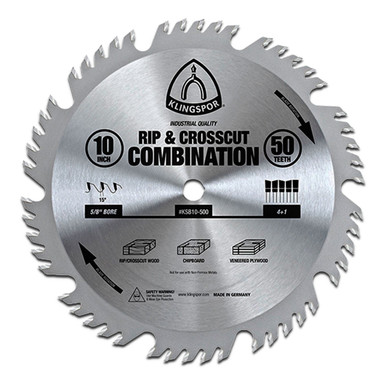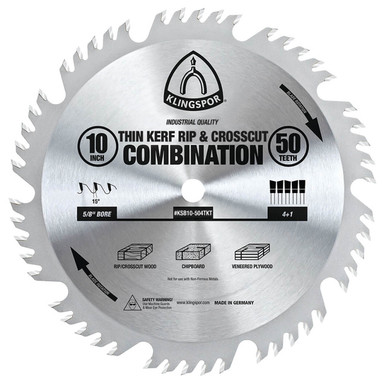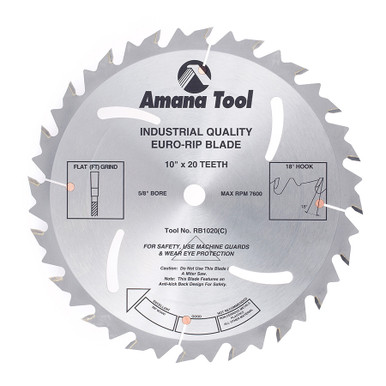I bought a used table saw (Craftsman Ryobi BT3000 - the best thing ever made wow), and for the first time in my life I've encountered a dull blade.
Looking now for a "10-inch circular saw blade"... between the different manufacturers, and different types of blades, there are hundreds if not thousands of choices out there.
I have never swapped out a blade for a specific cut, didn't matter the material or its end use case. I now put a "miter" blade on my table saw, b/c that's the only 10" blade I had laying around.
I'm also in the market for a new blade, and the one that caught my eye is this Klingspor:

 www.woodworkingshop.com
Based on pretty much nothing at all other than it's made in Germany, and there's a single review online that suggests it's good:
www.woodworkingshop.com
Based on pretty much nothing at all other than it's made in Germany, and there's a single review online that suggests it's good:
Other blades I've considered: Freud Industrial and CMT.
On my last table saw I had a think-kerf blade.
It worked fine for my needs... I don't see any reason not to get one?
Klingspor again has an option:

 www.woodworkingshop.com
Finally, I've heard carbide blades can be sharpened, and a quick internet search yielded this service:
www.woodworkingshop.com
Finally, I've heard carbide blades can be sharpened, and a quick internet search yielded this service:
Does anyone have any specific recommendations/experience in that regard?
Looking now for a "10-inch circular saw blade"... between the different manufacturers, and different types of blades, there are hundreds if not thousands of choices out there.
I have never swapped out a blade for a specific cut, didn't matter the material or its end use case. I now put a "miter" blade on my table saw, b/c that's the only 10" blade I had laying around.
I'm also in the market for a new blade, and the one that caught my eye is this Klingspor:

Klingspor's Rip & Crosscut Combination Blade, 10"x 50 Teeth
Value-priced, industrial-quality circular saw blades for cabinet shops, woodworkers and hobbyists. Manufactured in Germany, these blades are laser cut from virgin steel, flattened, ground, tensioned and tipped with large, European-style carbide tips.
On my last table saw I had a think-kerf blade.
It worked fine for my needs... I don't see any reason not to get one?
Klingspor again has an option:

Klingspor Thin Kerf Combination 10X50T Blade
Thin kerf blades have become extremely popular these days. They are more efficient, produce less waste and heat, and help underpowered saws run more smoothly.
Does anyone have any specific recommendations/experience in that regard?








